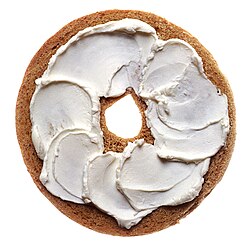
This is a list of spreads. A spread is a food that is literally spread, generally with a knife, onto food items such as bread or crackers. Spreads are added to food to enhance the flavour or texture of the food.

This is a list of spreads. A spread is a food that is literally spread, generally with a knife, onto food items such as bread or crackers. Spreads are added to food to enhance the flavour or texture of the food.
This section needs additional citations for verification .(August 2021) |














Cheeses used as a spread and cheese spreads include:


Fruit spreads and preserves include:

Yeast extract spreads include: